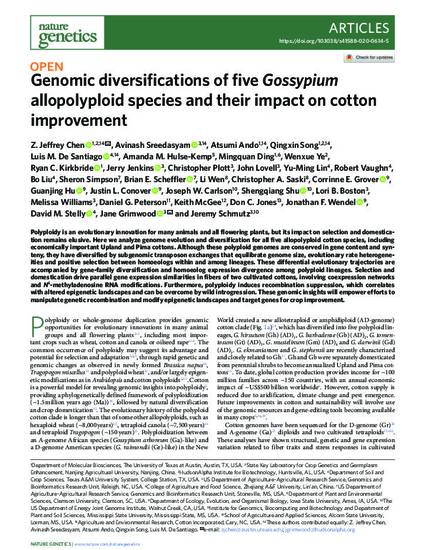
Polyploidy is an evolutionary innovation for many animals and all flowering plants, but its impact on selection and domestication remains elusive. Here we analyze genome evolution and diversification for all five allopolyploid cotton species, including economically important Upland and Pima cottons. Although these polyploid genomes are conserved in gene content and synteny, they have diversified by subgenomic transposon exchanges that equilibrate genome size, evolutionary rate heterogeneities and positive selection between homoeologs within and among lineages. These differential evolutionary trajectories are accompanied by gene-family diversification and homoeolog expression divergence among polyploid lineages. Selection and domestication drive parallel gene expression similarities in fibers of two cultivated cottons, involving coexpression networks and N6-methyladenosine RNA modifications. Furthermore, polyploidy induces recombination suppression, which correlates with altered epigenetic landscapes and can be overcome by wild introgression. These genomic insights will empower efforts to manipulate genetic recombination and modify epigenetic landscapes and target genes for crop improvement.
Available at: http://works.bepress.com/jonathan_wendel/91/

This article is published as Chen, Z. Jeffrey, Avinash Sreedasyam, Atsumi Ando, Qingxin Song, Luis M. De Santiago, Amanda M. Hulse-Kemp, Mingquan Ding et al. "Genomic diversifications of five Gossypium allopolyploid species and their impact on cotton improvement." Nature Genetics (2020). doi: 10.1038/s41588-020-0614-5.